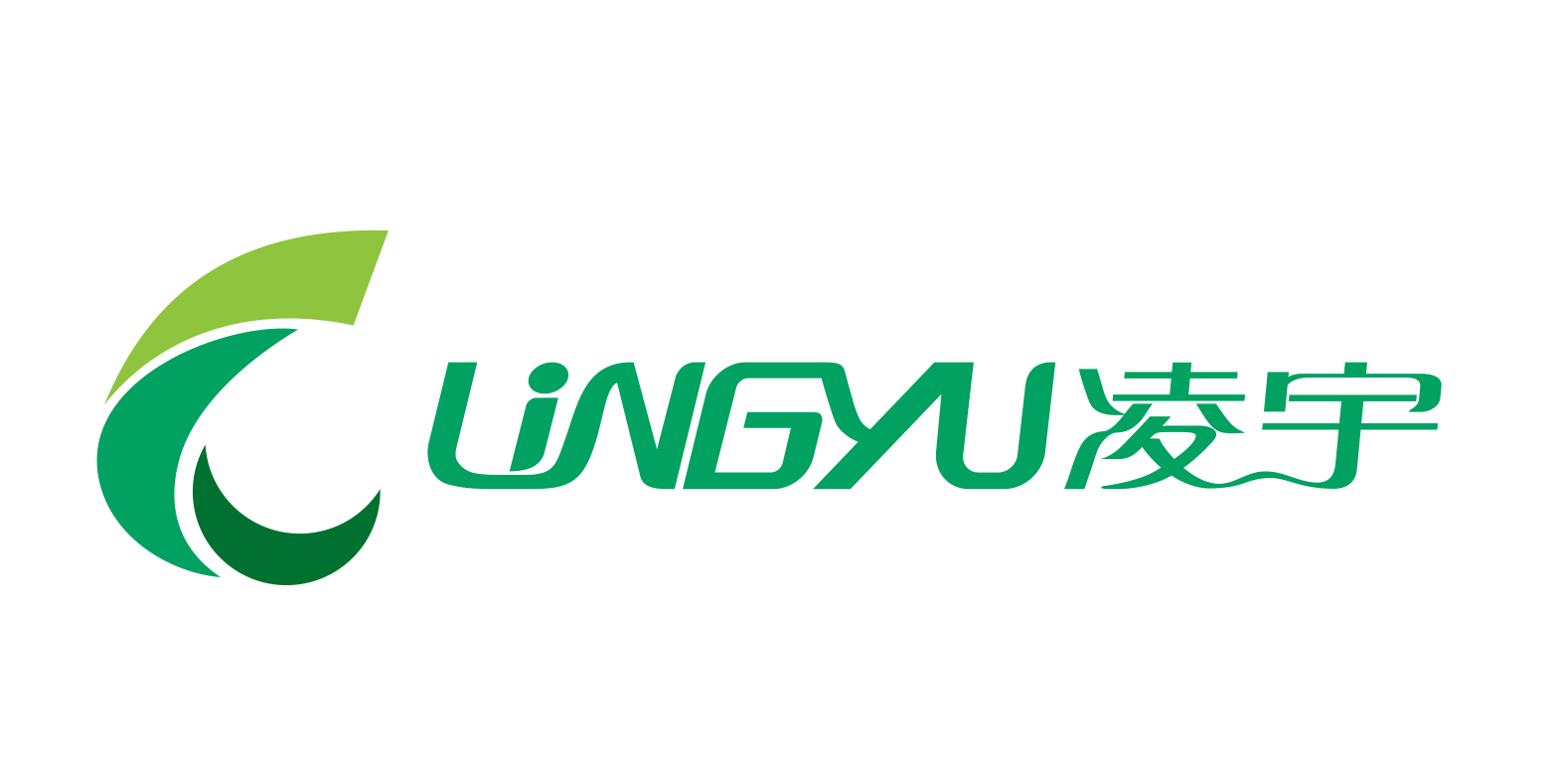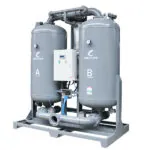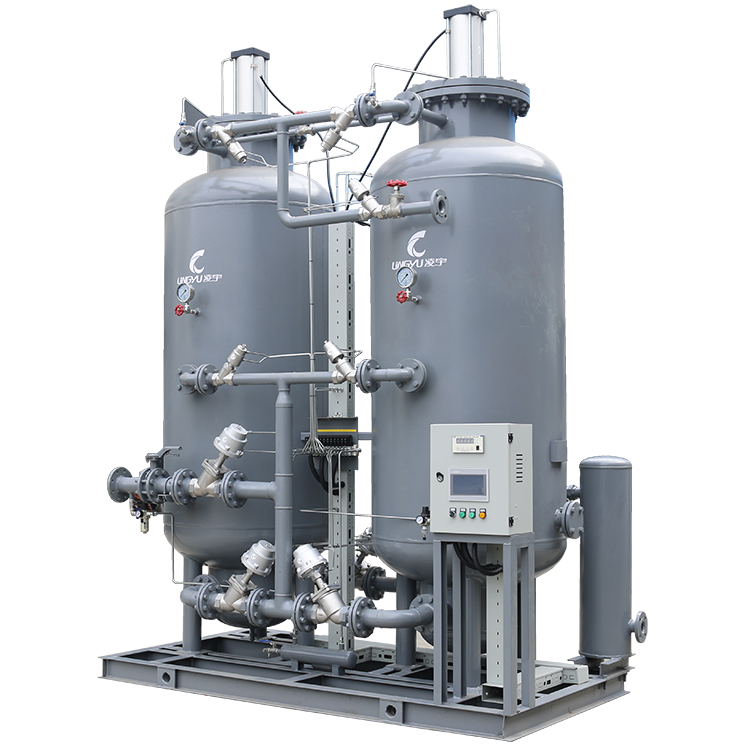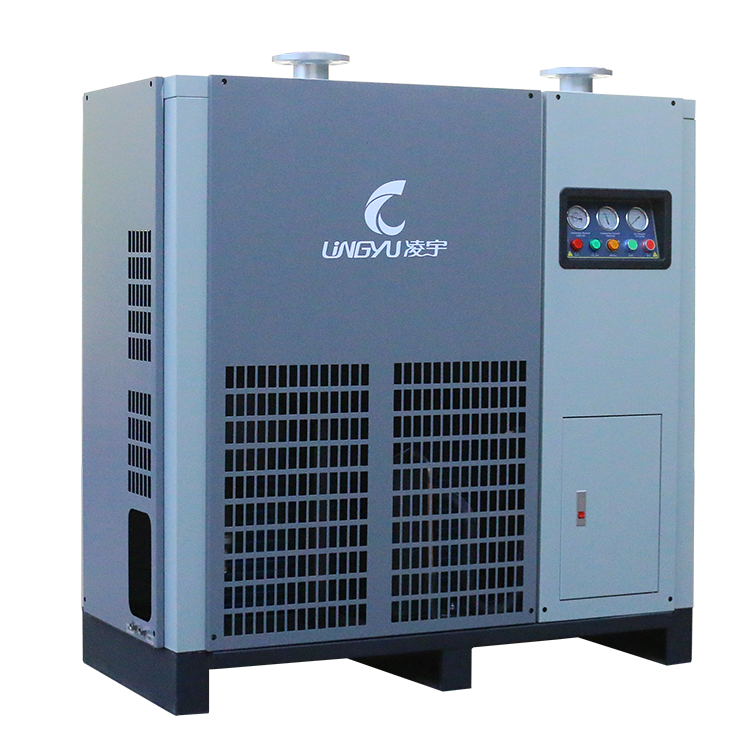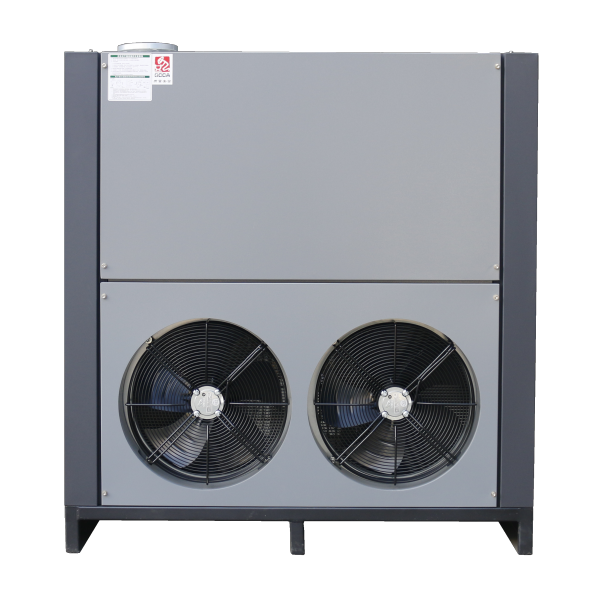Thermal Regenerative Adsorption Dryer – HH Series
Thermal regenerative adsorption dryers, also known as low-heat adsorption dryers, play a critical role in ensuring dry, high-quality compressed air for industrial applications. While many users focus on the basic specifications, understanding the operating principles, technical requirements, and extended benefits can help you select the most suitable system.
1. How Thermal Regenerative Adsorption Dryers Work
These dryers operate on the Temperature Swing Adsorption (TSA) principle. Moisture in compressed air is absorbed by the desiccant at normal temperature. During regeneration, the absorbed moisture is released back into the gas phase when heated.
Key points to note:
The heat required for desorption comes from an external source and part of the dryer’s own product air.
Complete desorption does not mean the desiccant is fully regenerated.
The desiccant’s original adsorption capacity is restored only when it cools near its initial temperature.
Regeneration is a two-step process: first heating and desorption, then cooling and full regeneration.
Understanding this process is essential for users who want to optimize dryer performance and ensure consistent dew point control.
2. Operating Conditions and Technical Requirements
Applicable fluids: Compressed air, non-corrosive gases
Rated inlet pressure: 0.7 MPa (usable 0.6–1.0 MPa; other pressures customizable)
Inlet temperature: 10–30℃ (maximum 40℃)
Average regeneration air consumption: 4–8%
Outlet dew point: ≤-40℃
Desiccant: Activated alumina + high-performance molecular sieves
Rated ambient temperature: 35℃ (usable 2–45℃)
Technical Specifications Example
| Airflow (m³/min) | Voltage/Hz | Total Power (kW) | Inlet/Outlet | Weight (kg) | Dimensions (mm) L×W×H |
|---|---|---|---|---|---|
| 1.5 | 380/50 | 1.7 | G1″ | 125 | 725×630×1795 |
| 2.5 | 380/50 | 1.7 | G1″ | 180 | 840×570×1695 |
| 6.5 | 380/50 | 3.7 | G1½” | 436 | 1160×680×1860 |
| 17.0 | 380/50 | 10.0 | DN65 | 850 | 1350×930×2440 |
| 50.0 | 380/50 | 20.1 | DN100 | 2000 | 2040×1240×2780 |
| 150.0 | 380/50 | 55.1 | DN200 | 6100 | 3100×1580×3274 |
Note: For airflows above 150 m³/min or special specifications, materials, or temperature requirements, please contact the manufacturer for technical support. Data are for reference only and subject to change.
3. Applications Users Often Want to Explore
Thermal regenerative adsorption dryers are widely used across industries:
Ozone generators, Laboratory analyzers, Waveguide drying
Environmental chambers, Dry sprinkler systems, Airbrushing
Pneumatic automation systems, Outdoor HVAC controls, Gas chromatographs
Medical air compressors, Electronic chip testing, Robotic machinery
Dental air compressors, Dry nitrogen replacement, Car wash controls
Bus door & locking systems, Air bearings, Graphic printers
CEMS systems, Vortex tubes, Air turbines, FTIR spectrometers
Air-operated pumps, Antenna pressurization
This demonstrates that users may require more than just technical specifications—they also need guidance on matching dryers to specific industrial applications, operating conditions, and air quality requirements.
4. Additional Considerations Users Often Explore
4.1 Energy Efficiency and Regeneration
Understanding energy consumption during the heating and cooling cycles is critical. Efficient operation reduces costs and maintains consistent dew points, preventing moisture-related equipment failures.
4.2 Maintenance and Lifespan
Users often ask about desiccant life, filter replacement, and cooling methods. Proper maintenance ensures long-term reliability, reduces downtime, and optimizes overall system performance.
4.3 Custom Solutions
Lingyu provides tailored solutions to meet specialized air quality needs, including:
Custom airflow, pressure, or temperature specifications
Integration with advanced filtration systems
Complete industrial gas and compressed air treatment solutions
5. How to Get Expert Advice
If you are unsure which HH series dryer suits your system:
Share your air quality requirements with Lingyu
Receive a detailed system recommendation
Access custom design support for special applications
Expert guidance ensures you choose a system that is efficient, reliable, and fully optimized for your production environment.
6. Conclusion
HH series thermal regenerative adsorption dryers are essential for providing dry, high-quality compressed air. Beyond specifications, users should understand regeneration processes, maintenance needs, energy efficiency, and customized options. This knowledge allows informed decisions, improves system reliability, and ensures consistent performance across diverse industrial applications.
